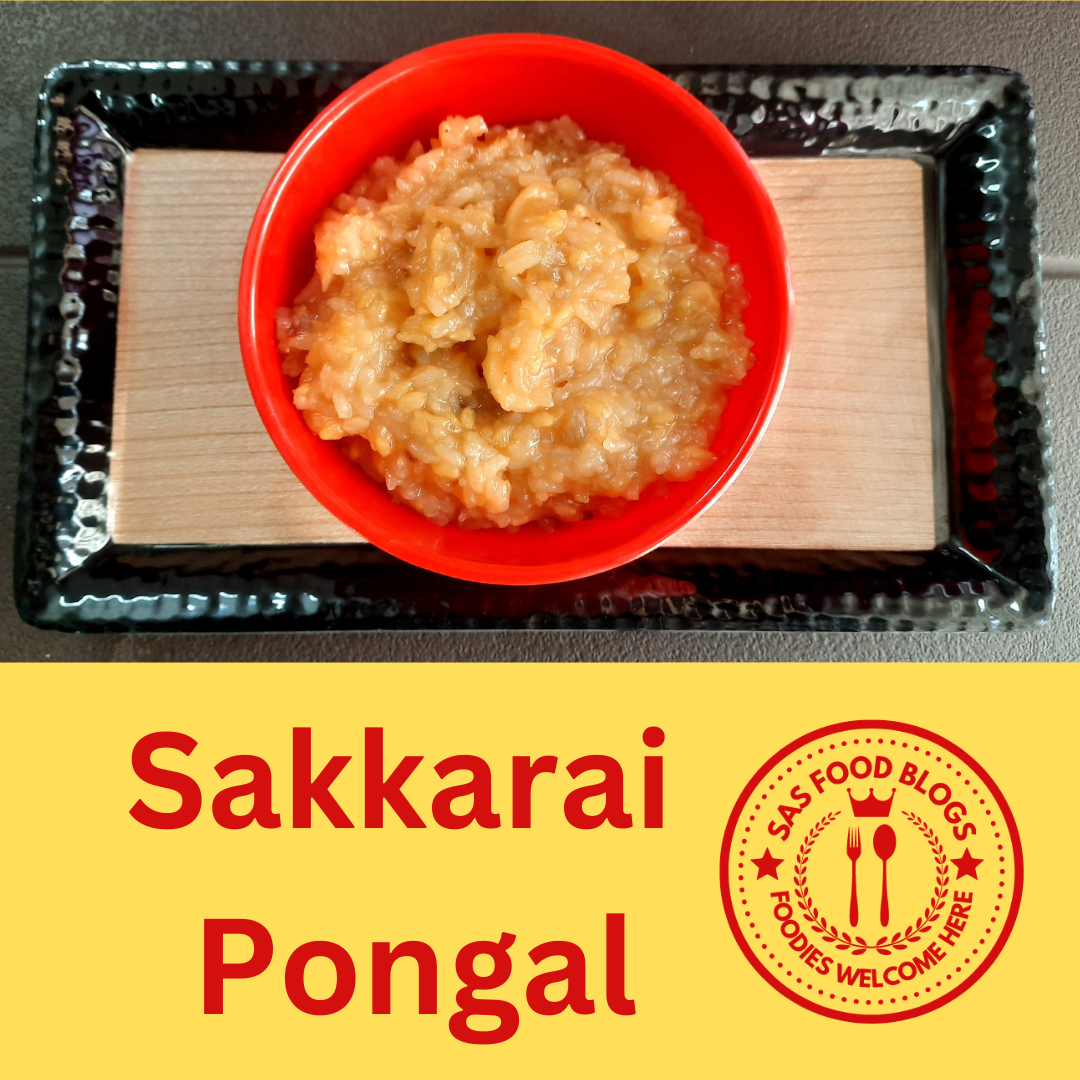How to make Sakkarai Pongal?
Hello Friends welcome to SAS FOOD BLOGS, Today we are going to see how to make Sakkarai Pongal.
Sakkarai Pongal is a traditional South Indian sweet dish made during the festival of Pongal, which is a harvest festival celebrated in Tamil Nadu, India.
This dish is a type of sweet rice pudding that is flavoured with jaggery (a concentrated product of date, cane juice, or palm sap without separation of the molasses and crystals) and infused with the aroma of ghee (clarified butter) and cardamom.
INGREDIENTS:
- 1 cup rice
- 1/4 cup split yellow moong dal (lentils)
- 1 cup grated jaggery
- 1/2 cup ghee (clarified butter)
- 1/4 cup cashews
- 1/4 cup raisins
- 1/2 teaspoon cardamom powder
- Edible camphor – A pinch
- A pinch of salt
Preparation Method
Today’s recipe is delicious and taste recipe that is Sakkarai Pongal and so let’s gets started.
Step 1 (Sakkarai Pongal)
- Wash the rice and moong dal together. Cook them in a pressure cooker or a pot with about 4 cups of water until soft and mushy.
- In a separate pan, dissolve the jaggery in a little water to make syrup. Strain it to remove impurities.
- Then to the cooked rice add the jaggery syrup and then add dal mixture. Mix well and continue cooking on low heat until everything is well combined.
- In another pan, heat ghee and fry the cashews until they turn golden brown. Add raisins and fry until they puff up. Add this mixture to the rice and jaggery mixture.
Step 2 (Sakkarai Pongal)
- Add cardamom powder and a pinch of edible camphor (if using) to the Sakkarai Pongal and mix well. Then check for seasoning by adding salt as per your need.
- Cook the mixture on low heat for a few more minutes until it thickens to the desired consistency.
- Sakkarai Pongal is typically served hot and can be enjoyed as a festive treat or a dessert on special occasions. It’s a delicious and comforting dish with a perfect balance of sweetness and aromatic flavors.
Sakkarai Pongal is ready to serve, so you can try this recipe in your home and enjoy it and share the recipe with your family and friends.
Benefits of Sakkarai Pongal:
Sakkarai Pongal, being a traditional South Indian dish made with rice, lentils, jaggery, and ghee, offers several nutritional benefits. Here are some potential benefits of Sakkarai Pongal:
Step 3 (Sakkarai Pongal)
Rich in Carbohydrates:
Rice and lentils provide a good source of complex carbohydrates, which are essential for energy production in the body.
Protein Content:
Lentils in Sakkarai Pongal contribute to the protein content of the dish. Proteins are crucial for muscle repair, immune function, and overall growth.
Good Source of Fiber:
The combination of rice and lentils also provides dietary fiber, promoting digestive health and helping to regulate blood sugar levels.
Vitamins and Minerals:
The dish contains various vitamins and minerals from ingredients such as rice, lentils, and jaggery.
Jaggery Benefits:
Jaggery, a natural sweetener used in Sakkarai Pongal, contains iron, magnesium, potassium, and vitamins. It is considered a healthier alternative to refined sugar due to its relatively higher nutrient content.
Step 4 (Sakkarai Pongal)
Ghee’s Nutritional Value:
Ghee, used in the preparation, adds flavour and richness to the dish. It contains healthy fats, fat-soluble vitamins, and provides a source of energy.
Antioxidant Properties:
Ingredients like cardamom used in Sakkarai Pongal have antioxidant properties, which can help neutralize harmful free radicals in the body.
Comfort Food:
Beyond its nutritional content, Sakkarai Pongal is a comfort food that can lift the mood and provide a sense of satisfaction, making it a popular choice during festivals and special occasions.
It’s important to note that while Sakkarai Pongal has nutritional benefits, it should be consumed in moderation, especially for individuals with specific dietary restrictions or health conditions.
Additionally, the overall nutritional profile may vary based on specific ingredients and preparation methods.
